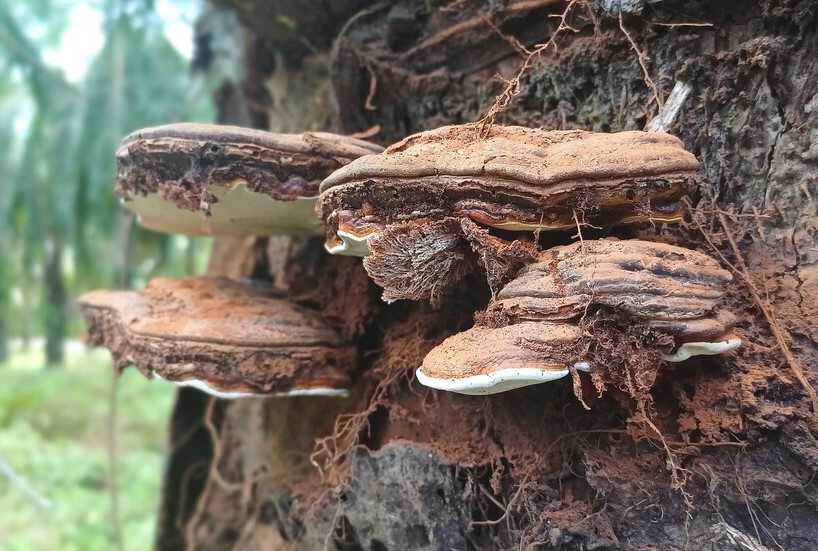How to Eradicate Ganoderma Disease in Oil Palm Plantations / How to Use Aussie Ganoderma
Read More

Participate to Building a More Advanced Sustainable Plantation and Agriculture Industry in Indonesia


Characteristics of Ganoderma Disease
The Ganoderma boninense fungus usually attacks oil palms that are more than 5 years old. The first symptom that can be observed is the wilting of oil palm leaves, followed by a decrease in fruit production. Infected oil palm trunks will show signs of decay and holes or destroyed wood tissue at the base of the trunk.
Visually, Ganoderma can be recognized by the formation of white or cream-colored mycelium on the roots. If the disease gets worse, reddish-brown fungal fruiting bodies will be seen around the base of the plant stem. This indicates that the fungus has proliferated and deeply damaged the root system of the plant.
Impact of Ganoderma Disease on Oil Palm Plantations
Ganoderma disease can cause enormous damage to oil palm plantations. One of the main impacts is the death of infected plants. When the roots of the plant are damaged, the oil palm loses its ability to absorb water and nutrients, resulting in plant wilting and eventual death. This process often takes place slowly, making it difficult for growers to detect the disease in its early stages.
In addition, the disease also reduces the productivity of oil palms. Infected plants produce lower quality fruit and fewer fresh fruit bunches (FFB). This of course has an impact on farmers' income, as healthy and productive oil palms are their main source of income.
How Ganoderma Disease Spreads
Ganoderma disease spreads through fungal spores that can be carried by wind, water, or contaminated farming tools. These spores can enter the soil and infect the roots of oil palm plants. In addition, infected plant material, such as stems or leaves that fall to the ground, can also be a source of spread of the ganoderma fungus.
The onset of ganoderma disease often occurs gradually. Therefore, oil palm plantation owners should be vigilant and monitor the condition of their plants regularly to detect early signs of this fungal attack.